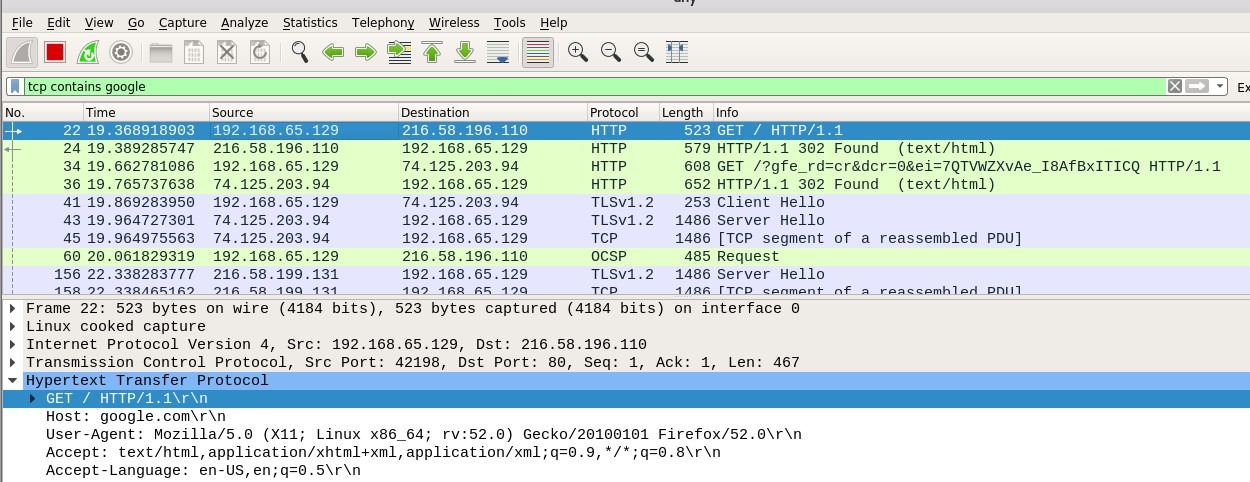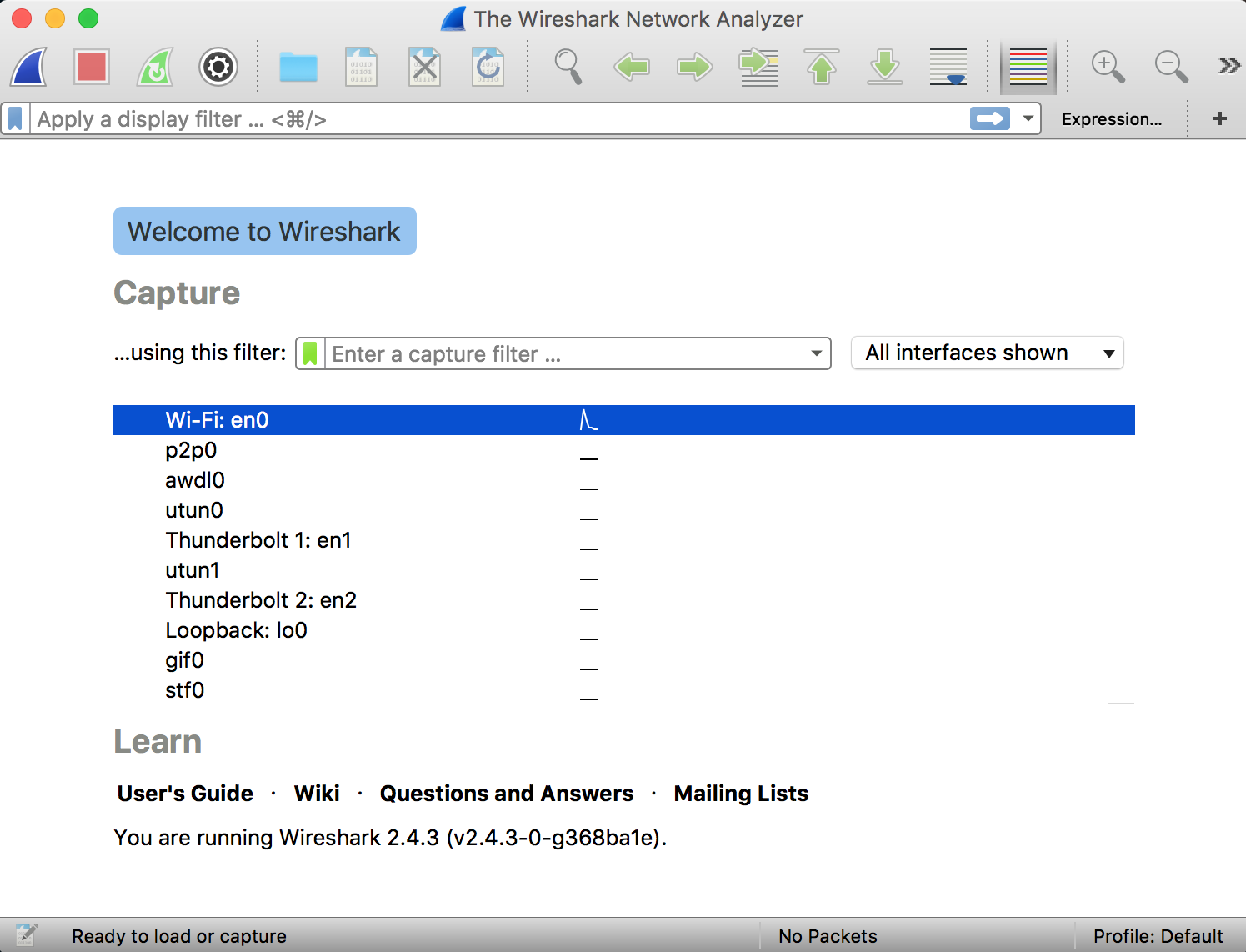
Tip: you can always use filter in Wireshark to just display the packets you want to see. In the Capture Filter box type host 8.8.8.8. Double-click on the interface you want to use for the capture. You should use your own screenshot.ĭo you see any parallel connections your browser makes? If so, how many can you see in your screenshot? To capture network traffic using a capture filter: Select either the Capture menu and then the Interfaces dialog box or the List the available capture interfaces toolbar. After double-clicking on the interface name, Wireshark will begin capturing. Again, use Wireshark to capture the traffic while you open up the page.Įxample screenshot below. Your computer may have a different name for the interface. Now, we will open a webpage with embeded objects (e.g., cnn.com which has a lot of images/videos embeded) in a browser. Example screenshot below.ĭescribe the TCP packets that you see, i.e., how each packet corresponds to TCP handshake, data transfer and closing connection steps. After the curl/wget is done, stop the capture in Wireshark. Warning: keep your other network activities to the minimum for a better experience, e.g., avoid streaming Netflix when capturing in Wireshark. Then you should be able to see packets flowing! Click the red square button on top to stop the capture. On the left side, select one (or more) interfaces that you want to capture from, then click “Start”. Enable the packet capture and apply filters to view specific details such as the source port or destination port number, IP address or subnet mask of the. If you run into any problems, you can refer to for more detailed help.
#WIRESHARK CAPTURE FILTER INTERFACE INSTALL#
On Mac and Linux, you can also install from command line (homebrew/macports, yum install, apt-get install). You can find installation instructions here: However, it’s in the post-capture analysis that the granular detail of what’s going on in the network is revealed. There are other ways to initiate packet capturing. In the Wireshark Capture Interfaces window, select Start. To select multiple networks, hold the Shift. The network packets are displayed in real time, as they’re captured. To begin capturing packets with Wireshark: Select one or more of networks, go to the menu bar, then select Capture.
#WIRESHARK CAPTURE FILTER INTERFACE DOWNLOAD#


In the Aruba Central app, set the filter to Sites or Global.To apply packet capture filters, complete the followings steps: The Apply Filters option in the Live Events page gets enabled when Packet Capture is enabled for a wireless client connected to an access point.įor more information about Live Events, see Client Live Events. Contact your Aruba Account Manager to enable it in your Aruba Central account.Īruba Central allows you to filter the packet capture details to provide specific information. Packet Capture Filters is supported in this release as a selectively available feature.


 0 kommentar(er)
0 kommentar(er)
